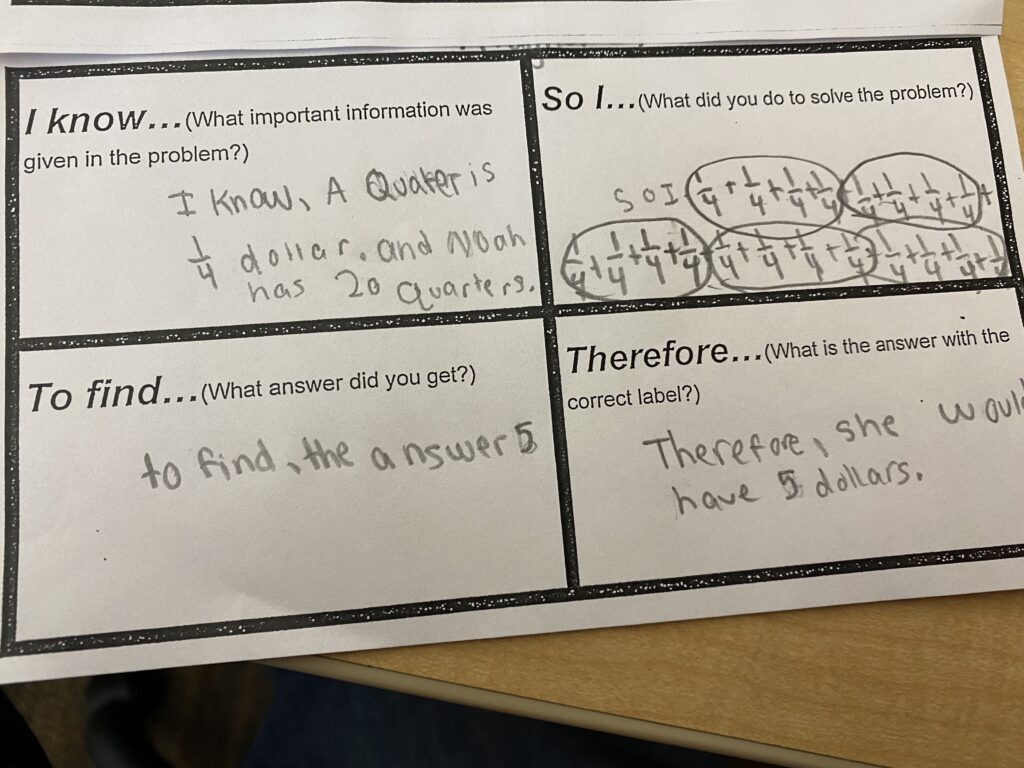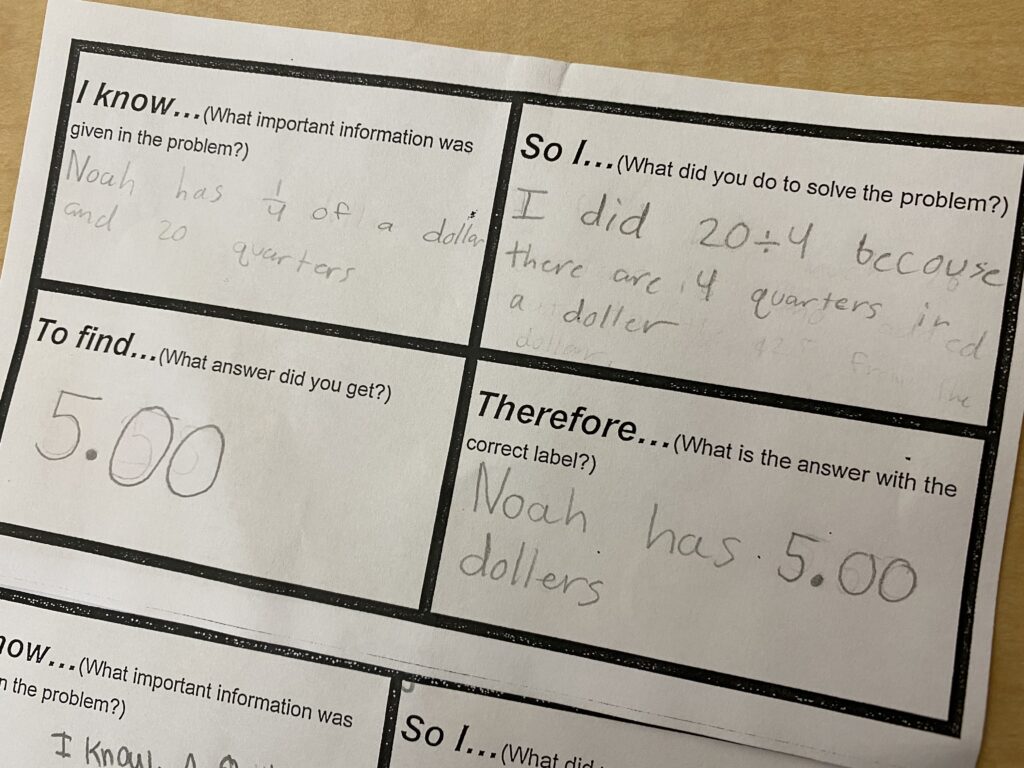Teaching problem solving is a tough task. Students have to read a word problem, understand what to do, complete the computation, give an answer, and then determine if the answer is reasonable. So how do teachers best support students in that endeavor?
There is no magic bullet to help students become better problem solvers. They need to be exposed to different problem types. They need to see, hear, and learn how other mathematicians around them are solving problems. Some students also need a structure to help them solve problems and explain their thinking.
One strategy I’ve use is called “I know… So I… To find… Therefore…” This helps students work through a problem and explain their thinking. Here’s a breakdown of each of those parts.
- I know… What important information was given in the problem?
- So I… What did you do to solve the problem?
- To find… What answer did you get?
- Therefore… What is the answer with the correct label?
Let’s look at the following problem to walk through the process.
David started his coin collection with 14 coins. He added 3 coins to his collection at the end of each month for 5 months. How many coins are in David’s collection after 5 months?
Students would answer the question with: I know David has 14 coins in his collection. He adds 3 coins each month, and this happens for 5 months. So I added 14 + 3 + 3 + 3 + 3 + 3 because he gets 3 coins after each of the 5 months to find 29. Therefore, David has 29 coins in collection after 5 months. (Students could also say they added 14 + (3 x 5) instead of using repeated addition.)
This takes some modeling at the beginning of the year, and I always supply a graphic organizer with the “I know.. So I… To find… Therefore…” components already listed. I created a copy of the graphic organizer on Google Docs.
Students pick up on the process pretty quickly. Using the graphic organizer slows their thinking, which improves focus during the problem solving process. It also helps improve a student’s explanation by giving them a structure to follow.
Last week, my students were working on problem involving fractions. The problem was: A quarter is 1/4 dollar. Noah has 20 quarters. How much money does he have? Explain.
I gave my students graphic organizers. (We’re not quite ready to take the training wheels off yet.) Here are two examples of how an average student completed the graphic organizer.


I have adjusted this approach over the years. I’m sure I’ll continue to make slight changes in the future to try and improve the supports I’m providing for my students. What strategies and supports do you use with your students to help them be better problem solvers?
